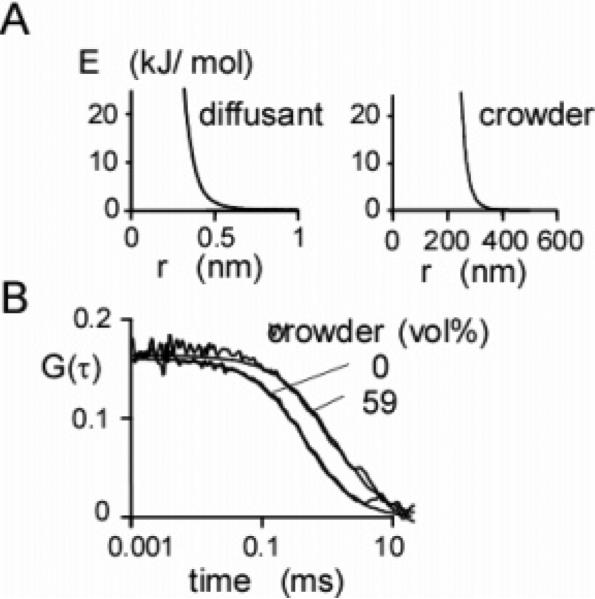Figure 8.
Simulations of crowding. (A) Nonbonding potentials used in crowding simulations. The radius of the particles was defined operationally as the distance from the center of the particle at which the potential dropped to kT. (B) Effect of crowding on G(τ). Brownian dynamics trajectories (100 ms) were generated for 81 spherical diffusing particles (diffusion coefficient 95 μm2/s, effective radius 0.45 nm) and 420 large crowding particles (diffusion coefficient 0.67 μm2/s, effective radius 300 nm) in a 3 × 3 × 9 μm3 box for a volume exclusion of 59%. The solid lines represent a fit of eq 9 to the data. Fitted parameters: G(0) = 0.161 and 0.164 and τD = 0.80 and 2.01 ms for volume fractions 0% and 59%, respectively.

